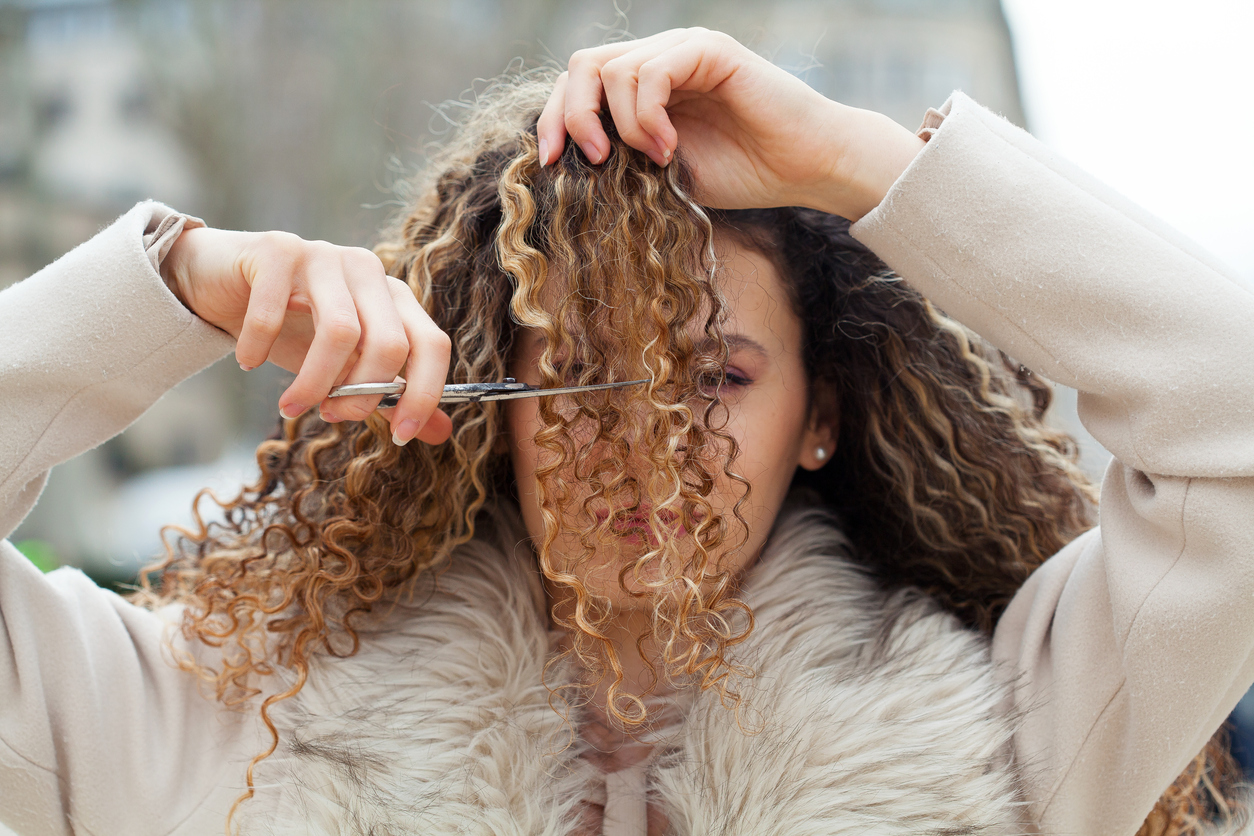
In today’s world, people are choosing to embrace living more authentically and discover their true selves. One way this is expressed is in loving one’s hair in its natural state.
To help you along the way, here is some information explaining various curly hair cuts and techniques utilized by hairstylists.

The Deva Cut
Origin: The Deva cut is a technique created and perfected by Lorraine Massey who is the author of the book Curly Girl and founder of the first Devachan salon in New York City.
How does it work?
The Deva cut takes into account the natural wave pattern of each individual strand of hair, cutting at such an angle as to not interfere with its pattern. The Deva cut is done layer by layer, curl by curl. The Deva cut is a technique that can be used to create a curly bob that frames the face adding volume on the sides or the signature waterfall style with cascades of longer waves and curls.
Wet or Dry Cut?
As opposed to traditional wet hair cutting techniques, the deva cut requires the hair to be dry. It is recommended to wash and detangle the hair prior to your hair appointment. Avoid tying up your hair in a bun, a ponytail, or wearing a hat before reaching the salon since these may influence the natural wave pattern.
Click here to see some amazing deva cut transformations.
The Rezo Cut
Origin: Master stylist and curl expert Nubia Suarez who also owns the Utopia Salon and Day Spa in New Jersey, invented the famous Rezo cut.
How does it work?
The Rezo cut maintains an even length around the face and is ideal for those that want to maintain long curls instead of a style that frames the face. The style caters to women with wavy, curly, coily, and kinky hair types and is ideal for those looking for more volume and shape. It is reportedly compatible with all hair textures and may be personalized for each individual face shape while allowing for the length to be maintained.
Wet or Dry Cut?
The Rezo cut is a dry, curl by curl cut. For AMAZING before and after Rezo cuts go here.
YouTuber Kelly Flores documented her experience with the Rezo Cut on her channel Joy Before Her and was lucky to get a session with Nubia Suarez herself!

Diametrix Cut
Origin: This style was created by Christo Curlisto, who owns Christo fifth avenue in New York.
How does it work?
The Diametrix technique creates a long and diagonal cut with inner layers. It is reported to reduce the volume at the bottom, allowing the curls to frame the face by adding more body to the crown of the head. This style reduces and tames the fizz and reduces the bulkiness of the hair. It is suitable for any curly texture, but this style works best for those who want to keep their hair long.
Wet or Dry Cut?
It is a wet hair cutting technique. Go here for more information about this cut.

Ouidad Cut
Origin: This cut was created by hairstylist and author, Ouidad, who owns salons across the United States, Canada, and Curacao.
How does it work?
The objective of the Ouidad technique is to eliminate the dreaded triangular or pyramid-shaped hair. The Ouidad technique starts by pulling out and gently shaking vertical sections of hair below the widest part of the head (by the temples) to reveal thicker sections within the curls. These thicker areas are then either “carved” to remove more hair, resulting in tighter and thicker curls, or “sliced” to remove less hair. Thereby creating volume and shape on thinner and looser curls.
Wet or Dry Cut?
This is a wet-cutting method. Find out more about the Ouidad cut here.
Ri Ci Cut
Origin: The Ri Ci style and line of products was invented by salon owner and stylist Ricky Pennici.
How does it work?
While all the other cuts mentioned here accentuate curl patterns, the Ri Ci cut is based on hair density and weight. This makes the Ri Ci cut great for various types of hair texture. If you have wavy hair, this cut will enhance the curl. This cut can help control the curls for those with curly hair. For those with coily hair, the cut helps by enabling curl definition. The cut does not focus on wave patterns which makes it suitable for short, medium, or long hair.
Wet or Dry Cut?
This cut is done on wet hair. For more on the Ri Ci cut go here.

Mona Cut
Origin: This cut was created and popularized by Mona Baltazhar of Davide Hair Studio in New York.
How does it work?
This cut creates an angled bob hairstyle. It is used to create unique silhouettes and moving shapes. Hair texture, curl pattern, and individual lifestyles are taken into account before cutting.
Wet or Dry Cut?
This is a dry haircut. You can get more information on the Mona cut here.
Tunnel Cut
Origin: This cut was created by Jonathan Torch who owns “Curly hair solutions”
How does it work?
Aimed at reducing bulkiness, this controlled technique process involves choosing selected strands of hair that are removed from the bulkiest sections of the head, while being aware of the natural direction of hair growth. This tunnel technique also enables hair to be thinned from the same place every time, thus limiting over-cutting and over-thinning.
Wet or Dry Cut?
This cut is done on wet hair. Find out more about the tunnel cut here.

The Cado Cut
Origin: This cut was created by Reema Jaber who owns the Hair by Reema Salon.
How does it work?
The Cadō cut is a 4 part dry cutting method that can be completely customizable depending on the clients desired result.
The Cadō cut is designed to create beautiful cascading layers, volume, and a balanced shape. This technique ensures that all types of curls and waves can be cut to enhance, define, and volumize the natural texture.
Wet or Dry Cut?
This cut is done on dry hair. Find out more about the Cadō cut here. Check out this amazing transformation:
Sources We Found Useful:
https://www.wildheartsalon.net/post/curly-cuts
https://www.ouidad.com/blog/hair-salon-tips/5-rules-for-cutting-curly-hair
https://www.today.com/style/how-hairstylist-mona-baltazar-helps-women-love-their-curly-hair-t120358






